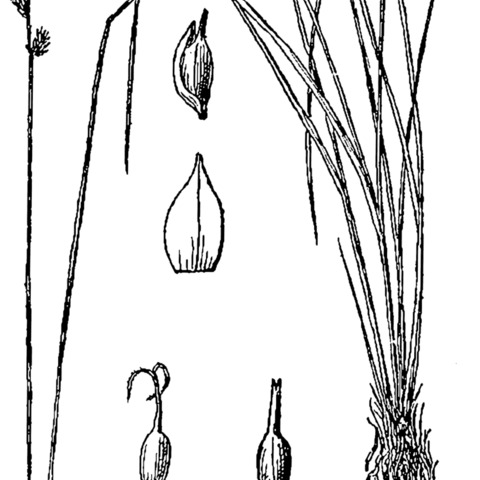Stems tufted, aphyllopodic, 1–7 dm, stiff, scabrous on the angles above; lvs 3–5 per stem, all in the basal third, shorter than the stems, plicate, 1–2.5 mm wide, scabrous above; spikes 3–8, 3–13 mm, sessile, all crowded or the lower remote; subdioecious, occasionally with a few intermingled or basal fls of opposite sex, rarely with staminate and pistillate spikes in the same infl; anthers 1.2–2.2 mm; pistillate scales castaneous with green midrib and hyaline margins; perigynia 5–25, at least the lower ones spreading to reflexed, castaneous, planoconvex, ovate to deltoid, spongy-thickened at base, 2.1–3.8 mm, two-fifths to two-thirds as wide, 5–12-nerved on both sides or nerveless ventrally, serrulate distally and on the prominent, softy bidentate beak 0.6–1.6 mm; achene lenticular. Calciphile, in wet places; Nf. to Sask., s. to Pa., W.Va., Tenn., Ill., and Mo. (C. muricata var. s.; C. elachycarpa)


